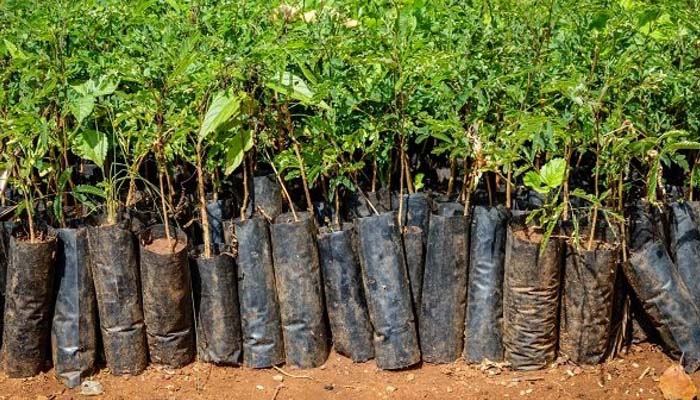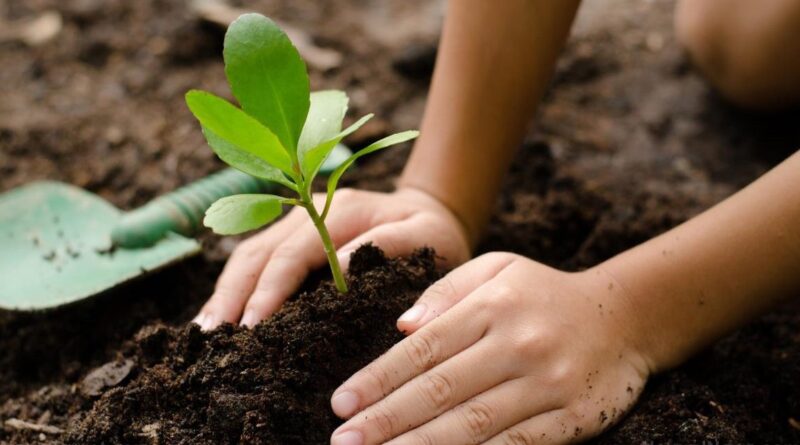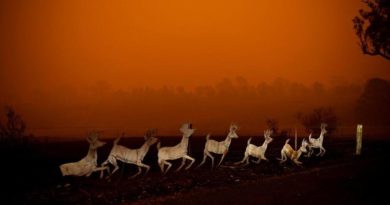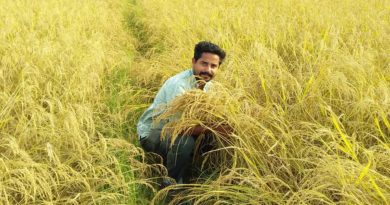When tree planting does more harm than good
Sanjay Gubbi
Monsoon has set in. The landscape is turning green everywhere. There is a spree to plant trees by environmental groups and environmentalists. A noble campaign to increase the green cover of the country. Tree planting is seen as one of the easiest ways to participate in environmental protection, halt rising global temperatures, and as a solution to various natural disasters. All done with good intentions but a few points are important to ponder over.
I came across a picture recently on a social media platform that caught my attention– it was a tree planting activity that involved a popular Sandalwood comedian and an urban environmentalist. The environmentalist touted it as “an amazing effort by joining hands with the department”, and said they were “trying to green the entire mountain range”. From the pictures, it looked like a well-known bank supported the drive, possibly under their Corporate Social Responsibility initiative, and the event was organised by a local, well-intentioned environmental group. There were four important players–a celebrity, a well-known environmentalist, a corporate sponsor, and an environmental group. I am not sure who initiated this activity but the key issue is about the location of this activity.

I wonder if the people involved in this activity realised that the area where the tree planting was undertaken is a threatened, natural habitat called woodland savannah. Due to geo-climatic reasons, such habitats will have sparse, stunted tree growth and a lot of open space filled with local grass species. Endemic flora and fauna that survive in such habitats will, unfortunately, disappear if such areas are transformed as forests due to afforestation activities.
The area where this tree plantation drive was undertaken also hosts an endemic, threatened cycad plant species called Cycas swamyi, named after the famed botanist B G L Swamy and son of the noted Kannada writer D V Gundappa. This ancient plant species, that survived from the days of dinosaurs, exists only in woodland savannahs and if those habitats are turned into forests the plant species will disappear. In Karnataka, such woodland savannahs that host these cycad species now exist in small pockets in a few rain shadow districts including Mandya, Mysore, Tumkur, Ramanagara, Chamarajanagara, Gadag, Bellary, Koppal and others.
Similarly, our research from several areas in Karnataka shows that these woodland savannahs, most of which are outside the ambit of protected area system, are the stronghold of the four-horned antelope. Four-horned antelope is a habitat specialist and we could lose them if all these hillocks are turned into forests.
We have already seen the disappearance of the Great Indian Bustard from Ranibennur Wildlife Sanctuary due to tree planting. Maidenahally, a wonderful rolling grassland habitat in the 1980s, hosted Indian grey wolves, and my sighting of the biggest pack of wolves of six individuals was in this area in August 1994. Unfortunately, our camera trapping exercise in this area did not document any wolves in the last four years. But interestingly we documented leopards. The area now has tree cover, which was non-existent earlier. I am not sure if we didn’t find wolves merely due to seasonal variation or if leopards, the larger carnivore, has excluded wolves from the area. I wish that the former is true.
Another activity that’s threatening natural habitats these days is ‘seed ball bombing’. Seed balls consist of seeds of a tree species rolled within a ball of clay and compost. These seed balls are thrown in areas of interest as an afforestation drive. However, the unintended threat of the seed balls is the invasive plant species. There is no understanding of where the soil for making these seed balls come from. The soil could already be holding seeds of invasive plant species like lantana, parthenium, mesquite, Mexican devil, or chromolaena, any of which will be detrimental to the entire ecosystem if spread through the seed balls. The well-intentioned activity of the enthusiasts could itself turn into a nightmare for the natural ecosystem.
Many of the plant species propagated may not even be native to the place where it will be disbursed. Merely because banyan is native to India does not mean it is native to certain habitats, hence it shouldn’t be planted everywhere. Similarly, seed bombing in woodland savannah would destroy the natural habitat and replace it with close canopy forests, which is certainly not desirable. Though woodland savannahs look dry and open during summer and can make an untrained eye think that it needs tree planting, such natural habitats have their unique flora and fauna and no afforestation should be carried out.
Another natural habitat that’s seriously threatened is the scrubland. Recently a new species of fan-throated lizard Sitana dharwarensis was discovered by three young researchers. These open scrublands where the lizard was found is generally termed as wasteland and tree-planting drives are carried out but at the cost of such lesser-known wildlife species. Many a time they would be gone even before they are known to the outside world.
Planting of trees is a wonderful initiative to involve citizens in environmental protection. But it needs a basic understanding of ecology especially when carried out in natural habitats. A bit of common sense and guidance from an ecologist, or those who have a sound grasp of the issues will help such well-intended activities. More importantly, it can halt the destruction of nature in the name of ‘greening’.
This was originally published by Deccan Herald




